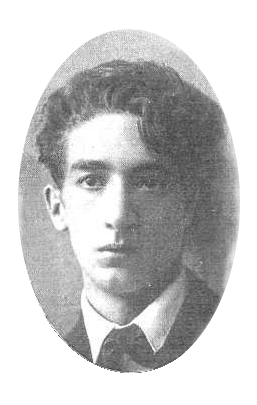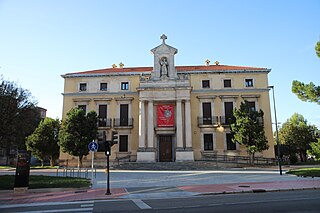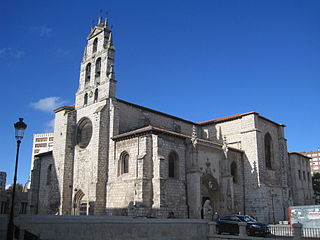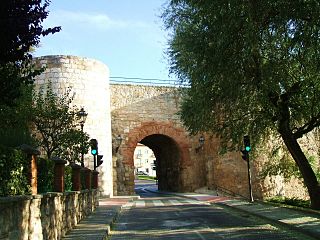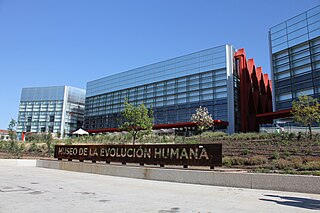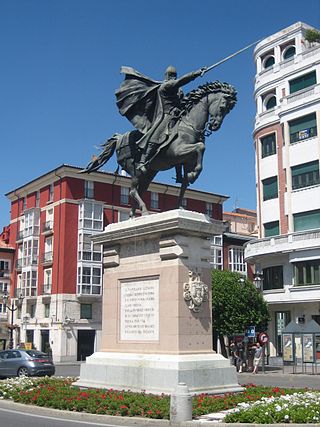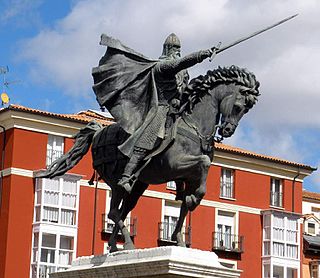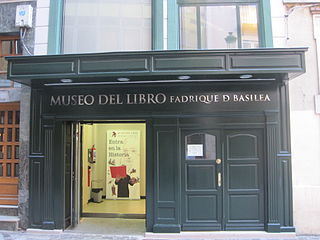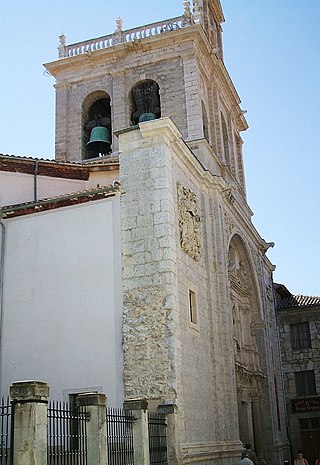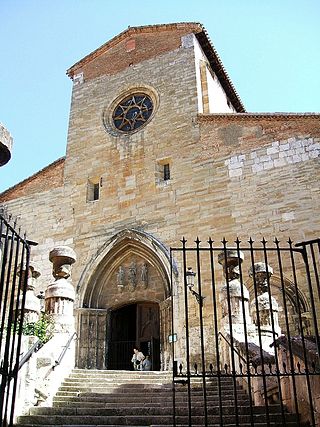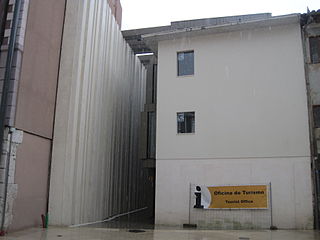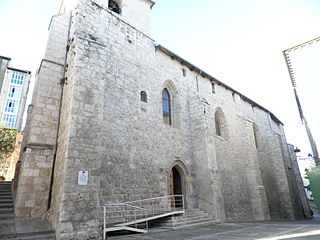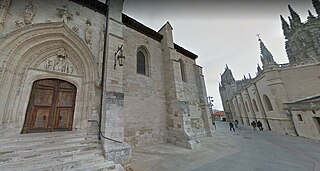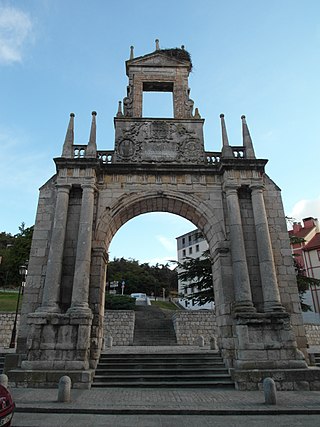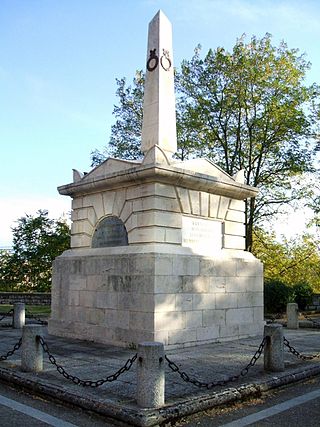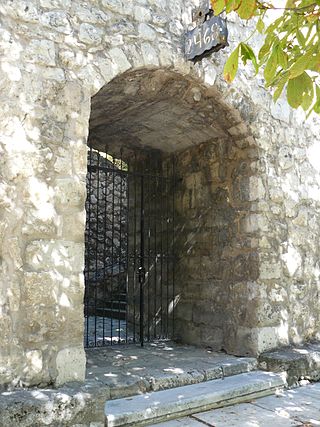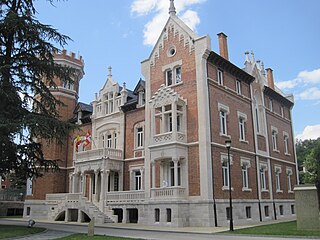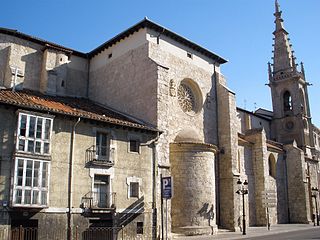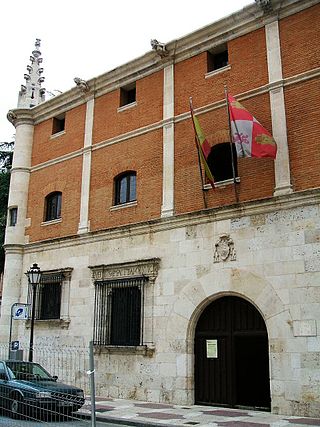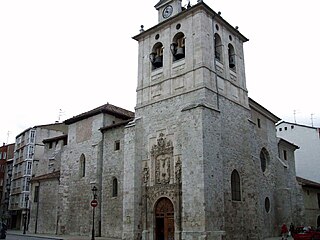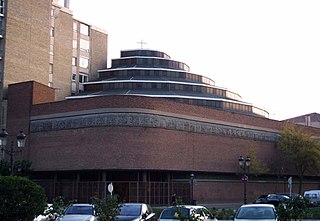Self-guided Sightseeing Tour #3 in Burgos, Spain
Legend
Guided Free Walking Tours
Book free guided walking tours in Burgos.
Guided Sightseeing Tours
Book guided sightseeing tours and activities in Burgos.
Tour Facts
8.1 km
224 m
Experience Burgos in Spain in a whole new way with our self-guided sightseeing tour. This site not only offers you practical information and insider tips, but also a rich variety of activities and sights you shouldn't miss. Whether you love art and culture, want to explore historical sites or simply want to experience the vibrant atmosphere of a lively city - you'll find everything you need for your personal adventure here.
Activities in BurgosIndividual Sights in BurgosSight 1: Regino Sáinz de la Maza
Regino Sainz de la Maza y Ruiz was a Spanish classical guitarist and composer.
Sight 2: Iglesia de San José Obrero
The parish church of San José Obrero is a Roman Catholic church in the city of Burgos.
Sight 3: Iglesia de Santa Clara
The Iglesia del Carmen de Burgos is a nun's convent in Burgos, Castile and León, Spain. It is situated on the corner of Calle de Covarrubias, del Progreso and Santa Clara. It is a Gothic edifice built mostly in the thirteenth century, at the time of its founding, when it was part of the Monasterio de Santa María la Real de Las Huelgas. It dates to 1234.
Sight 4: Convento de las Trinitarias
The Convent of the Trinitarians of Burgos is a monastery of contemplative Trinitarians located in the Plaza de Santa Teresa in the capital of Burgos.
Sight 5: Iglesia de San Lesmes
Iglesia de San Lesmes Abad is a Roman Catholic church in Burgos, Spain.
Sight 6: Muralla de Burgos
The wall of Burgos is a defensive fence that surrounds part of the historic center of the Spanish city of Burgos. Its current structure dates back to the Late Middle Ages. Since the eighteenth century it began to be progressively demolished at certain points, but several important sections and gates have been preserved, as well as some isolated towers and canvases.
Sight 7: Forum Burgos Evolución
Fórum Evolución is the name of the Palacio de Congresos y Auditorio municipal, a building located in the Human Evolution Complex, in the Spanish city of Burgos. Designed by the Spanish architect Juan Navarro Baldeweg, construction began around 2005, and opened its doors in June 2012.
Sight 8: Museum of Human Evolution
Join Free Tour*The Museum of Human Evolution is situated on the south bank of the river Arlanzón, in the Spanish city of Burgos. It is located roughly 16 kilometers west of the Sierra de Atapuerca, the location of some of the most important human fossil finds in the world. In addition, the Archaeological site of Atapuerca, which was declared a World Heritage Site in 2000, has yielded some of the exhibits at the museum.
Sight 9: Ben Galbon
The Cidian Cycle is a set of eight sculptures made by Joaquín Lucarini and placed on the bridge of San Pablo, in the city of Burgos.
Sight 10: Estatua del Cid
The Monument to El Cid Campeador is an equestrian statue located in the city of Burgos, in Spain, and represents Rodrigo Díaz de Vivar, a Castilian military leader who came to dominate the Levante of the Iberian Peninsula at the head of his own mesnada at the end of the eleventh century. It is the work of the famous sculptor Juan Cristóbal González Quesada, and was inaugurated by General Franco on July 23, 1955.
Sight 11: Teatro Principal
Join Free Tour*The Teatro Principal de Burgos is a building from the Elizabethan era located at the beginning of the Paseo del Espolón, next to the palace of the Provincial Council. It began to be built in 1843 by the architect Bernardino Martínez de Velasco, under the direction of Francisco de Angoitia, and was inaugurated in 1858. From its inauguration until 1956 it hosted a large number of concerts and shows. In the same building was the so-called Recreation Hall. After the 1997 refurbishment, carried out under the direction of the architect José María Pérez González ('Peridis'), the building recovered its dance, theatre and music activity, managed by the Municipal Institute of Culture of the City of Burgos.
Sight 12: Museo del Libro Fadrique de Basilea y Museo del Cid
The Fadrique Book Museum in Basel, also known simply as the Book Museum, was a museum space located in the Spanish city of Burgos. Its structure and works made it unique in the national territory. The Museo del Cid was located in the same building. As of June 2022, its collections are in the Book Museum located in the Archive of the Advancement of Castile, located in the town of Covarrubias (Burgos).
Sight 13: Iglesia de San Lorenzo
Iglesia de San Lorenzo el Real is a Baroque church in Burgos, Spain. It is located on Calle Almirante Bonifaz. San Lorenzo was originally a Jesuit church, built between 1684 and 1694 to replace an earlier building of more modest proportions. The work was financed and sponsored by Francisca de San Vítores and erected by Bernabé de Hazas and Francisco del Pontón. After the expulsion of the Jesuits in the late eighteenth century, the church became a parish church. Since its creation in 1945, the church has been the seat of the Brotherhood of Coronación de Espinas y de Cristo Rey.
Sight 14: Iglesia de San Gil
Iglesia de San Gil Abad is a church in Burgos, Spain. It dates to the 14th-15th century. It was declared a Bien de Interés Cultural site by decree of 3 June 1931.
Sight 15: Iglesia de la Divina Pastora
The Chapel of the Divine Shepherdess is a Catholic place of worship in the city of Burgos.
Sight 16: Consulado del Mar
The Consulate of the Sea of Burgos may refer to:The Consulate of Burgos, a mercantile institution of the wool trade founded in 1494. To the neoclassical building, headquarters of the Consulate located on the Paseo del Espolón. To the Provincial Academy of Drawing of Burgos, located in that building.
Sight 17: Puente Santa María
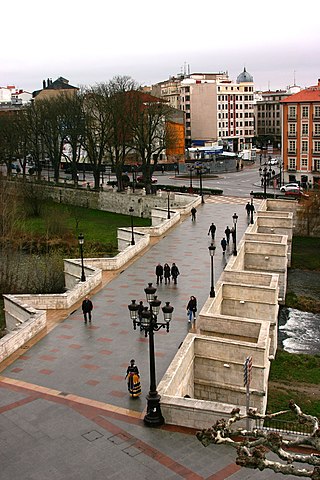
The Santa María Bridge is part of the group of bridges over the Arlanzón River in the Spanish city of Burgos. This bridge has been a key point in the city, as it was used as access to it, thus becoming one of the emblematic crossings. That is why from the beginning it has been the focus of intensive care.
Sight 18: Oficina de Turismo de Burgos
The Burgos Tourist Interpretation and Reception Centre (CITUR) is a building located in the Spanish city of Burgos.
Wikipedia: Centro de Interpretación y Recepción de Turistas de Burgos (ES)
Sight 19: Iglesia de Santa Águeda
Santa Gadea is a church dedicated to Saint Agatha in Burgos, Spain. The church is famous in history and literature for being the site where Rodrigo Díaz de Vivar at the behest of the Castilian Cortes, forced Alfonso VI to swear an oath that he was not an accomplice in the death of his brother, Sancho while he was besieging Zamora. Es el de la jura de Santa Gadea is the most notable Spanish medieval romance about this event.
Sight 20: Iglesia de San Nicolás de Bari
Iglesia de San Nicolás de Bari is a Catholic church on Fernán González street in Burgos, Spain, located next to the Camino de Santiago, behind the Cathedral of Burgos. It is mainly known for having one of the largest altarpieces in Spain and the only one carved in limestone.
Sight 21: Arco de Fernán González
The Arch of Fernán González is a large triumphal arch in the Herrerian style located in the city of Burgos, Spain.
Sight 22: El Empecinado
The Mausoleum of the Empecinado is a funerary monument that contains the mortal remains of the guerrilla Juan Martín Díez, the Empecinado, Spanish soldier and hero of the Spanish War of Independence.
Sight 23: Puerta de la Judería
The Jewish Quarter Gate is one of the entrances through the wall of the Spanish city of Burgos.
Sight 24: Palacio de la Isla-Instituto Castellano y Leonés de la Lengua
The Palacio de la Isla, located in the Spanish city of Burgos, was built in 1883 by the lawyer and banker Juan Muguiro y Casi in the orchard that he had acquired on the Paseo de la Isla, with the intention of spending the summer in the city. His style is romantic with neo-Gothic influences. In 1942, the building was declared an Asset of Cultural Interest.
Sight 25: Iglesia de la Merced
The church and convent of Nuestra Señora de la Merced is a late Gothic monument from the fifteenth and sixteenth centuries located on Calle de la Merced in the city of Burgos, in the province of the same name, Castile and León, Spain. The temple functions as a parish of the Jesuit fathers, while the old convent dependencies, inhabited by the Mercedarians for more than three centuries, are today integrated into a hotel business.
Sight 26: Burgos Museum
The Museum of Burgos, formerly known as the Provincial Archaeological Museum, has its rooms in two adjoining sixteenth-century palaces, the Casa de Miranda and the Casa de Íñigo Angulo, forming a block between Calera and Miranda streets, in the city of Burgos (Spain). The Museum's collections are exclusively from Burgos, by origin or destination, and show the historical and cultural evolution of the province.
Sight 27: Casa de Miranda-Museo de Burgos
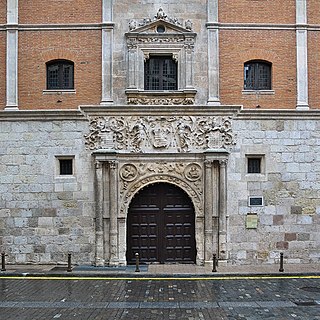
The Casa de Miranda is a Renaissance palace in the Spanish city of Burgos located in an urban space on Calle Calera, built in 1545 to serve as the residence of the canon of the cathedral, abbot of Salas in this same cathedral and apostolic protonotary, Francisco de Miranda Salón y España, son of Pedro de Miranda Salón and Isabel de España y Castillo, the building was probably directed by the architect Juan de Vallejo.
Sight 28: Iglesia de San Cosme y San Damián
Iglesia de San Cosme y San Damián is a Catholic parish church in Burgos, Spain, on the left bank of the Arlanzón River. It was built in the sixteenth century with a combination of the Late Gothic and Renaissance styles. It was a burial place of featured artists of the time.
Sight 29: Iglesia del Carmen
The Iglesia del Carmen de Burgos is a Catholic parish church built in Burgos, Castile and León, Spain. It is a modern building, built in 1966–1968, replacing a demolished baroque building. It is located at the intersection of Paseo del Empecinado with Calle del Carmen, between the Arlanzón River and the old railway. The church was inaugurated on 7 July 1968.
Share
Disclaimer Please be aware of your surroundings and do not enter private property. We are not liable for any damages that occur during the tours.
GPX-Download For navigation apps and GPS devices you can download the tour as a GPX file.
